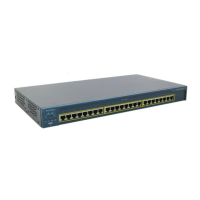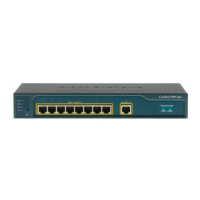xxvii
Catalyst 2950 and Catalyst 2955 Switch Software Configuration Guide
78-11380-12
Preface
Audience
This guide is for the networking professional managing the Catalyst 2950 and 2955 switches, hereafter
referred to as the switches. Before using this guide, you should have experience working with the Cisco
IOS and be familiar with the concepts and terminology of Ethernet and local area networking.
Purpose
This guide provides the information you need to configure software features on your switch. The
Catalyst 2950 switch is supported by either the standard software image (SI) or the enhanced software image
(EI). The Catalyst 2955 and Catalyst 2950 Long-Reach Ethernet (LRE) switches are supported only by the EI.
The EI provides a richer set of features, including access control lists (ACLs), enhanced quality of service
(QoS) features, extended-range VLANs, Remote Switched Port Analyzer (RSPAN), and unicast MAC
address filtering. The cryptographic EI provides support for the Secure Shell Protocol (SSP). For a list of
switches that support the SI and the EI, see Table 1-1 in Chapter 1, “Overview.”
The Catalyst 2955 switch also supports an additional set of features that are described in Chapter 3,
“Configuring Catalyst 2955 Switch Alarms.” The switch has facilities to process alarms related to the
temperature, power supply conditions, and status of the Ethernet ports.
Use this guide with other documents for information about these topics:
• Requirements—This guide assumes that you have met the hardware and software requirements and
cluster compatibility requirements described in the release notes.
• Start-up information—This guide assumes that you have assigned switch IP information and
passwords by using the browser setup program described in the switch hardware installation guide.
• Embedded device manager and Network Assistant graphical user interfaces (GUIs)—This guide
does not provide detailed information on the GUIs. However, the concepts in this guide are
applicable to the GUI user. For information about the device manager, see the switch online help.
For information about Network Assistant, see the Getting Started with Cisco Network Assistant,
available on Cisco.com.
• Cluster configuration—For information about planning for, creating, and maintaining switch
clusters, see the Getting Started with Cisco Network Assistant, available on Cisco.com. For
information about the clustering-related command-line interface (CLI) commands, see the
command reference for this release.

